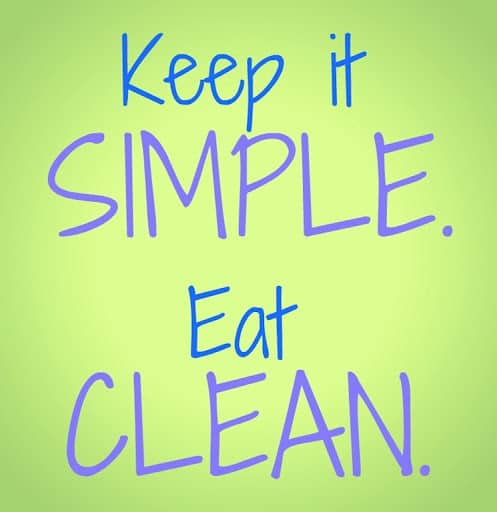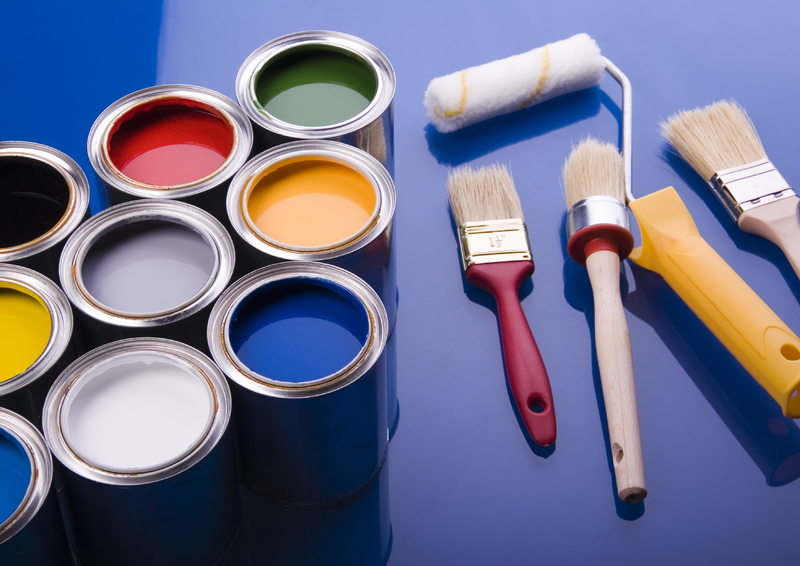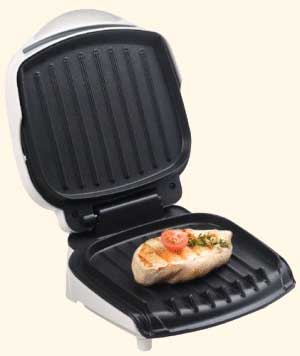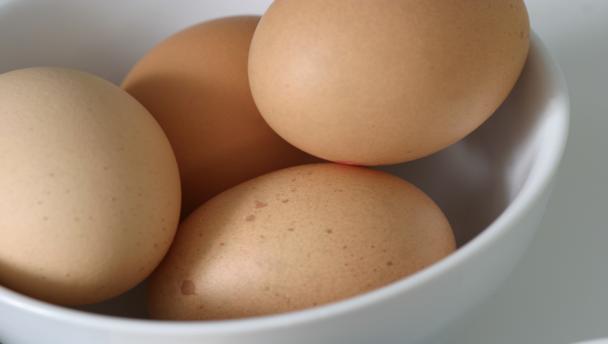STEP 1 Cut out the junk
Eating Clean & Lean is not a quick fix, but you'll steadily shift the excess fat and you will enjoy your food. The idea is to limit sugar, but this is not a no-carb/no-fat plan. If you love starches, you can still have them, but instead of white toast, go for sourdough or rye bread and swap white pasta for spelt noodles or quinoa. It's totally do-able.
Out Sweets, wheat, processed foods, alcohol (except for vodka or gin)
In Lean meat, fish, green veg, nuts, berries, avocados, olive oil, sweet potatoes, oatcakes, green tea.
STEP 2 Take supplements
Supplementing is not a must, but I like to take a multi-vitamin, plus I have a fish oil capsule, CLA capsule and Primrose oil for EHA every day alongside my Lotuslite.
Fish oil contains omega 3 fatty acids, which reduce body fat by boosting your metabolism.
STEP 3 Yes, coffee is OK
Coffee is bursting with antioxidants and can support fat burning. Go for an organic espresso, have it with cream (yes, cream!) and only drink it before lunch, so as not to disrupt your sleep. Try an espresso before you exercise, you'll be flying! Need an afternoon caffeine kick? Green tea.
STEP 4 Have a cheat meal
Eat what you want once a week. This can help you lose weight - seriously! Healthy eating keeps the metabolism steady; eating differently forces your body to work harder to burn the extra food. If you do it too often, you'll store fat, so be disciplined
It’s important to understand that your weight and health are not separate issues. Being overweight is a symptom of being unhealthy. Focus on your health and the weight will drop off. You also need to learn the difference between an excuse and a reason. Be brutally honest: if you really want something you’ll find a way to get it. So if you find yourself saying, ‘I didn’t have time to exercise today’, or, ‘I didn’t have time to prepare healthy food’, let me ask you this: would you have found time if your life depended on it? Well, it does.
I have previously introduced you to the Clean and Lean concept – a diet and work-out plan that will make you slim, healthy and curvy, without making you over-exercise or leaving you feeling hungry.
You must believe you can do this. It doesn’t matter how often you have failed in the past – your past does not equal your future. What matters now is focusing on what you want, identifying what you need to get it and taking consistent action. Your health and happiness are important, so stand strong.
Create a support system for yourself. Explain to those around you what you are trying to do and how much it means to you. Ask your friends and family for help; if they choose not to encourage you, they may not be the best people to be around right now. Tell people you have cut out alcohol, bread or whatever, and this will help you stick with it. Take it one step at a time, so that you don’t get overwhelmed. I don’t expect you never to have a glass of wine or a bar of chocolate ever again. But believe me, this works!
James Duigan is the founder of Bodyism, a unique nutritional and personal training system (bodyism.com)
Read more: http://www.dailymail.co.uk/home/you/article-1281923/Clean-Lean-special-Time-real.html#ixzz2R6665vLq
 Why stress is a weighty issue?
Why stress is a weighty issue?
It’s not just the wrong type of food that piles on the
pounds. The relentless, low-level stress of everyday life
can also add inches to your waist
When we’re frightened, angry, tense or worried our bodies become flooded with adrenalin and a stress hormone called cortisol. The adrenalin keeps us alert and focused, while the cortisol prepares our muscles for a ‘fight-or-flight’ response. It also helps the body to release sugar into the bloodstream for instant energy. It’s all part of a defence mechanism that allows the body to respond appropriately when faced with danger.
While this stress mechanism worked well for us when we were cavemen, modern-day stress, caused by a relentlessly busy lifestyle, is really bad for you. It makes you fat, it wears out your immune system and it increases your risk of serious illness. This is because many of the situations that cause stress nowadays don’t present the sort of physical danger that you need to run away from. The result is that fat-storing hormones – and the sugar they help to release into the bloodstream – float around your system, eventually ending up as fat on your tummy and around your waist. They also make you crave more sugar because your body thinks it needs more to keep going.
As stress levels subside, your adrenalin levels fall, but cortisol (and the resulting blood sugar) stays in the system much longer. Research shows that fat cells around the stomach attract cortisol, giving you a layer of toxic fat just below your abdominal muscles that’s really hard to shift, so doing regular sit-ups is pointless if you always feel stressed. And stomach fat is the most dangerous type because it raises your risk of heart disease, high blood pressure, diabetes and certain cancers.
Constant stress also shuts down the digestive system because your body redirects blood from there to your muscles. So stress can leave you constipated, bloated and toxic. Beating stress is the only way to better health and a better body.
STRESS ON A PLATE
 It’s not just stress that makes you stressed, the wrong type of food does too. Potentially toxic foods, such as refined sugar and processed foods, will make you feel more stressed because they release sugar into the bloodstream too quickly. It leads to a vicious cycle, where the more stressed you get, the more you crave toxic food, which makes you more stressed.
It’s not just stress that makes you stressed, the wrong type of food does too. Potentially toxic foods, such as refined sugar and processed foods, will make you feel more stressed because they release sugar into the bloodstream too quickly. It leads to a vicious cycle, where the more stressed you get, the more you crave toxic food, which makes you more stressed.
FOOD FRIENDS
Make these stress-reducing foods and supplements part of your diet:
- Berries are packed with vitamin C, which helps the body to deal with stress. Plus, they’re full of fibre which helps to regulate blood-sugar levels. Have a handful of berries with your breakfast.
- Dark green vegetables help to replenish the body with vitamins in times of stress. Have these with every meal if you can (even breakfast!), but make sure they’re organic.
- Turkey contains an amino acid called L-tryptophan, which releases serotonin (a calming, feel-good hormone) into the body. Keep it clean and lean by choosing skinless and organic.
- Sweet potatoes will satisfy a carb craving, but contain more fibre and vitamins than white potatoes.
- Avocados contain good fat and potassium which can lower your blood pressure and, therefore, stress levels. Have half an avocado on its own as a snack or with oatcakes for a delicious stressbusting breakfast.
- Nuts help boost a battered immune system, plus they’re full of B vitamins, which help to lower stress levels. Stick to a handful a day.
- Bodyism Body Serenity supplement contains essential minerals and vitamins, such as magnesium to aid restful sleep, and it can reduce cortisol levels before sleep.
- Bodyism Body Brilliance supplement is a stressbusting blend of vitamins, minerals, fibre and protein – one of the best ways to kick-start your day.
- (Go to bodyism.com for more details and to buy)

FOOD ENEMIES
Cut out these stress-inducing foods:
- Sweets and sugary snacks give you a quick burst of energy, but then cause your blood-sugar levels to crash, leaving you feeling sluggish, stressed and with poor concentration.
- Processed foods are full of junk and deplete the levels of vitamins and minerals in your body, leaving you more prone to stress. Stick to clean, lean, natural foods.
- Junk food, which is high in bad fats (burgers, chips, kebabs, etc), lowers your concentration levels and increases your stress levels.
- Salty foods increase your blood pressure, making you more prone to stress. The worst offenders are processed meats such as ham and bacon, and processed foods that are stuffed with salt.
- Coffee – too much caffeine stresses out your system by constantly flooding your
body with the fat-storing hormone cortisol. Stick to one or two cups of organic coffee a day.
- Alcohol – people mistakenly think it will help them to unwind after a hard day, but it has the opposite effect, just stressing your whole system further. Alcohol is also full of sugar which makes you toxic and fat.
CHANGE THE WAY YOU EAT
You can follow all the diet and exercise rules to the letter, but if you’re skipping meals, eating too quickly or eating while stressed, you’ll never be clean and lean. Well-digested food can help give you a flat stomach and a healthy body. Take your time over every meal – at least 20 minutes, more if it’s a big meal.
Here are the rules for eating properly:

- Chew each mouthful at least 20 times, 30 if you can manage it. Chewing releases all the vitamins and minerals contained in the food and breaks it down so it can be more easily digested.
- Put your cutlery down and take a few breaths between each mouthful.
- Don’t swallow until your food is a watery paste.
- Only ever eat when you’re relaxed. If you’re stressed, wait until you feel calm before eating.
- Stop when you’re full and don’t be afraid to leave food on your plate. You can always have more food later on if you become hungry again.
- Don’t mistake stress for hunger. If you’re stressed you need to calm down, not eat.
- Make sure you’re drinking plenty of still water. When you’re stressed it’s easy to forget to stay hydrated.
- Don’t watch TV or do any type of work while you’re eating. Focusing on something other than your food can lead to overeating.
Follow these rules and not only will your stress levels reduce but:
- You’ll look and feel less bloated.
- You’ll feel fuller quicker, so you’ll eat less at mealtimes and look leaner.
- You won’t feel uncomfortably full or bloated.
- You won’t mindlessly munch – when you stress-eat, you don’t take time to listen to your body properly, so you often end up eating when you’re not even hungry.
Read more: http://www.dailymail.co.uk/home/you/article-1281923/Clean-Lean-special-Time-real.html#ixzz2R66GJQtO
You won’t get a flat tummy with exercise alone. Cutting out toxic foods and sticking to a clean, natural, healthy diet are vital ingredients
Some of you may be familiar with the first book, Clean & Lean Diet. In it it explains that a ‘clean’ body is one that can deal effectively with everyday toxins and get rid of them successfully. A body can never be lean unless it’s clean, and toxins stop that happening. That’s because your body stores toxins in its fat cells. If you’re dieting, but toxic, your body will slowly lose fat, but these toxins will have nowhere to go other than back into your system. The result? You’ll feel tired, you’ll have headaches and you’ll struggle with your energy levels. This is why most of us feel rotten within a few days of starting a diet. Your body decides that it doesn’t like feeling that way, so it holds on to fat in order to store the toxins. So if you’re toxic, you’ll always find it hard to lose weight.
If you stick to ‘clean’ foods – meaning toxin-free foods that are unprocessed and close to their natural state – then you’ll lose weight easily and keep it off. So what are the clean foods that you should be eating? In a nutshell…
- They haven’t changed much from their natural state. For example, an orange in a bowl looks like an orange hanging on a tree, whereas a crisp looks nothing like a potato.
- They won’t need any added fake flavourings.
- They don’t last for months and months – clean foods will go off in the fridge or cupboard after a short while as they don’t contain preservatives.
- They don’t contain more than five or six ingredients.
- They don’t contain ingredients that you can’t pronounce or that you don’t recognise.
- They don’t list sugar as their main ingredient (or as one of their first three).
- They don’t make you feel bloated, gassy or too full.
Read more: http://www.dailymail.co.uk/home/you/article-1383071/Health-special-Eat-clean-lean.html#ixzz2R66URHtA
SAY NO TO TOXINS
The four main toxins that cause our bodies to cling to fat are caffeine, refined sugar, alcohol and processed foods, and their initials spell c-r-a-p. So what I say is, ‘Cut the crap!’
This is OK in small doses. A cup of coffee a day won’t do you much harm, and some studies suggest that it can even help with fat burning. The same goes for tea. Green tea – which also contains caffeine – is an even better fat burner, and I let my clients drink up to six cups a day (not in the evening, though, as it can stop you sleeping). The trouble with caffeine is that too much of it causes stress to your body. And too much stress dumps a ring of fat around your middle.

Sugary foods raise your insulin level, which causes fat storage. Studies show that 40 per cent of the sugar you eat is converted straight to fat, and that’s in a slim person; if you’re already overweight, up to 60 per cent is converted straight to fat and stored around your stomach, waist and hips. If you eat sugar every day, you’ll always find it a struggle to lose weight and you’ll never have a flat tummy.Sugar also leaches vitamins from your body, and a body starved of vitamins becomes hungry. That’s why overweight people are always hungry – they don’t eat enough vitamin-rich food and are actually malnourished. Toxic foods such as sugar will never satisfy you or fill you up. Plus, sugar makes you tired, lowers libido and weakens the immune system.
Refined sugar is found in the white sugar you put in your tea, as well as the following:
- fruit drinks
- white, non-organic pasta, bread and rice
- alcohol
- cakes, sweets, biscuits, ice cream
- foods marketed as ‘low fat’, including cereal bars and energy drinks
- any ingredient ending in ‘ose’, such as sucrose, glucose, maltose, lactose, dextrose and fructose
- also avoid foods containing artificial sweeteners, such as saccharin and aspartame.

Alcohol is full of sugar, and as a result makes you fat around the middle. It stimulates the production of the hormone oestrogen in your bloodstream, which promotes fat storage (specifically around your waist and tummy). In addition, the liver is a fat-burning organ, but when it’s busy processing alcohol it stops burning fat.
Alcohol also decreases muscle growth, leaving you podgy and out of shape. I see so many women with what I call a ‘wine waist’ – a thick waist and a swollen, squidgy tummy as a result of regularly drinking wine three or four days a week.
These go against every clean and lean rule there is. The less a food has been altered, the ‘cleaner’ it is and the better for our health and waistlines. Clean foods are very close to – if not the same as – their natural state, whereas processed foods are far
from it. They are usually made in factories, stripped of their natural goodness and pumped full of man-made preservatives and additives to make them look appetising and last longer.
Foods to avoid include:
- tinned foods
- white bread, pasta and rice
- processed meats
- breakfast cereals
- frozen ready meals - shop bought that contain additives
- frozen chips, wedges, etc
- packets of dried pasta
- packaged cakes, biscuits, muffins
- chocolate, sweets and crisps.
LET YOUR GUT DO THE WORK
If you want to lose weight around your stomach, it’s important that your digestive
system is functioning at its optimum ability, which is where probiotics and prebiotics come in. They work together to boost gut health and should be included in your diet, either by eating foods that contain them or by taking supplements. Unless your gut is as healthy as it can be, your stomach will always be fat.
Probiotics are live microorganisms, known as friendly bacteria, and are responsible for several important biological functions, including boosting your digestion, reducing levels of ‘bad’ gut bacteria and strengthening the immune system. They also help your body to absorb health-boosting nutrients from your food more efficiently. Prebiotics are non-digestible ingredients found in certain foods that stimulate the growth of friendly bacteria in the gut.
Probiotics are found in:
- sauerkraut
- miso
- fermented dairy products, such as acidophilus milk (make sure they’re low
- in sugar)
- natural yoghurt and yoghurt products (look for the words ‘live cultures added’ in the ingredients)
- some soft cheeses
- cultured buttermilk
- soured cream.
Read more: http://www.dailymail.co.uk/home/you/article-1383071/Health-special-Eat-clean-lean.html#ixzz2R66ZVOPz
Prebiotics are found in:
- bananas
- berries
- asparagus
- garlic
- tomatoes
- onions
- spinach
- kale
- lentils
- kidney beans
- chickpeas
- black beans
- oats.
Vitamin C makes pro- and prebiotics more effective, so tuck into vitamin C-rich foods every day, such as kiwi fruit, oranges, sweet potatoes, broccoli, brussels sprouts and tomatoes. If you would prefer to take pro- and prebiotics in supplement form, ask your local
health-food store for recommendations. A probiotic should contain several different strands of bacteria, including lactobacillus bulgaricus, lactobacillus acidophilus, streptococcus thermophilus and ifidobacterium.
Apart from helping you to achieve a flat tummy, the benefits of pro- and prebiotics include:
- lower ‘bad’ cholesterol levels
- increased vitamin absorption from your foods
- boosted immune system
- steady blood-sugar levels
- less constipation and diarrhoea
- reduced risk of bowel disorders
- possible reduced risk of cancer.
Read more: http://www.dailymail.co.uk/home/you/article-1383071/Health-special-Eat-clean-lean.html#ixzz2R66eI5B8
YOUR 14-DAY DAY TUMMY-TONING CHECK LIST
- Have three meals and two snacks a day.
- Do 90 minutes of exercise a week.
- No work-outs at weekends.
- Drink two to three litres of still, room-temperature water each day, ideally filtered.
- No alcohol or fizzy drinks.
- No processed foods.
Read more: http://www.dailymail.co.uk/home/you/article-1383046/Health-plan-How-flat-stomach-fast.html#ixzz2R66nxvP4 
Nearly every woman that they hate their tummy, and countless studies say it’s the least favourite body part. There are a number of reasons why women in particular store fat around their tummies. First, men tend to crave high-protein foods, such as steak and eggs, which feed muscles rather than fat cells, while women have sugar and fat cravings that often intensify at specific times in the menstrual cycle. When these cravings are satisfied, they result in a happier mood – however, this doesn’t last and the excess sugar tends to deposit fat all over the stomach and love handles. Second, there is a condition called visceroptosis, which is more common in women than in men. It involves a sinking of the abdominal organs, which results in a paunch. It’s basically what happens when the body’s natural girdle (the muscles that make the tummy flat) become defective. The condition can be caused by a loss of abdominal muscle tone, constipation and eating foods that inflame the gut and intoxicate the intestines (predominantly processed foods). Most cases can be cured by cleaning up your diet, improving your posture and maintaining good abdominal strength with the right exercises.
The third reason women may have a distended tummy is if they become pregnant again before their body has fully restored its optimal muscle strength, proper posture and ideal body weight after having a baby. With multiple pregnancies, the body can forget what it should look like. Waiting two years between pregnancies can prevent this paunch, as can good core conditioning between pregnancies. A post-pregnancy tummy-flattening plan involving proper nutrition and exercise can see the return of a pre-baby body in no time at all.
 Lunch Chicken
salad (use a palm sized serving of diced chicken breast mixed with 1 tablespoon of mayonnaise and a tsp of Dijon mustard) served over a bed of mixed greens
and a chopped tomato
Lunch Chicken
salad (use a palm sized serving of diced chicken breast mixed with 1 tablespoon of mayonnaise and a tsp of Dijon mustard) served over a bed of mixed greens
and a chopped tomato 
























